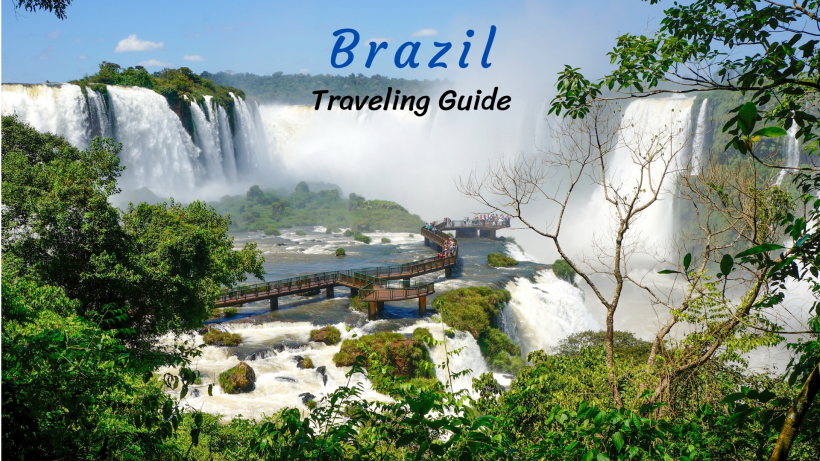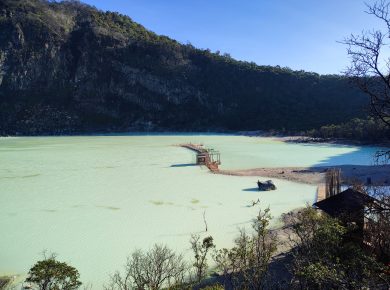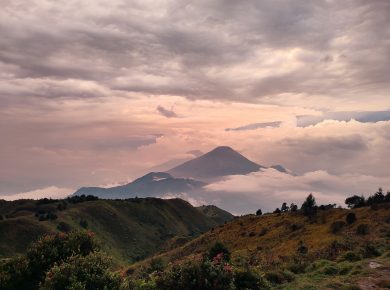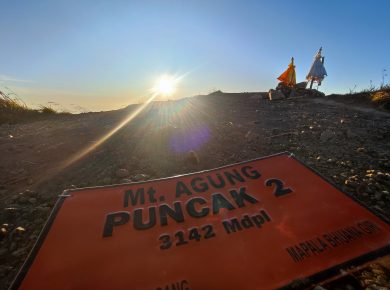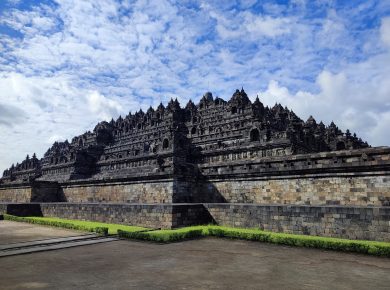Brazil is a wonderful country, a Latin American power with a vast territory of abundant nature that can take time to explore completely. Is it easy to travel to Brazil? How do you get around? Is Brazil safe? Where to stay? Which things to do? In this travel guide, you will get all the important information about this incredible destination.
Contents
Best time to go to Brazil
Brazil has such a large land area that it is divided into different climate zones. If you stick to the coasts of Brazil, the weather is pleasant all year. The temperature is always higher than 25 °C (77 °F) during the winter, which lasts from December to March. Although there is almost always sunshine, there is a rainy season from October to January.
The northeast (in the area surrounding the Amazon) is constantly hot, with temperatures frequently exceeding 40 °C (104 °F). The dry season in Manaus and the central Amazon lasts from July to October. During this time, you can see the most wildlife in the Amazon because the water has subsided and the animals have gathered at the watering holes. The same is true for the Pantanal.
There will be a lot less traffic and more affordable lodging if you visit during the Brazilian winter. If you are not trying to escape the harsh winter in North America, then I think this is the ideal time to visit.
Avoid coming in February if you are really watching your money because it is Carnival and prices will soar!


Cost of life
In recent years, Brazil has increased its costs, becoming an expensive country if we compare the costs of other countries in the region. Contrary to what many believe, cities like São Paulo or Rio de Janeiro are considered the most expensive in Latin America. During festivities and in tourist areas these costs tend to increase even more (Carnivals for example). In spite of this, Brazil supports a great national production and a high range of prices, so it will not be difficult to find options of all kinds and for all pockets.
Renting a one-bedroom apartment is possible for $165–$240; a three-bedroom apartment can be rented for $340–$500.
Market prices: milk, 1 liter—$0.62; white rice, 1 kg—$0.71; local cheese, 1 kg—$5.02; beef round, 1 kg—$4.53; domestic beer, 0.5 liter bottle—$0.90.
Restaurant prices: a cappuccino costs $1.08; a meal in an inexpensive restaurant may cost around $3.86; a McMeal at McDonald’s costs $4.83.
The total cost of living in Brazil for two people with average consumption for one month will be 572.1 USD, with no rent price included.
Safety
Brazil does have higher crime rates compared to some other countries. Major cities, such as Rio de Janeiro and São Paulo, tend to have higher crime rates, including instances of theft, robbery, and violence. However, it’s crucial to understand that not all areas within these cities are unsafe, and many neighborhoods are relatively secure.
Popular tourist areas and attractions in Brazil usually have increased security measures in place. These areas are often patrolled by police and security personnel to ensure the safety of visitors. It’s always advisable to stay alert and cautious, particularly in crowded places or during major events.
When using public transportation, it’s essential to remain vigilant, especially during peak hours. Use licensed taxis or ridesharing services, and be cautious when traveling by bus or subway. Keep an eye on your belongings and avoid displaying expensive items or large amounts of cash.
Also, it’s important to know the emergency contact numbers in Brazil. The general emergency number is 190 for the police, 192 for medical emergencies, and 193 for the fire department.

How to get to Brazil
From Europe to Brazil, you can fly with Lufthansa, taking the route Vilnius—Frankfurt—Rio de Janeiro. Sometimes you can catch flights on European airlines from Spain, Portugal, Germany, and Italy for $400-600 round trip.
If you are from the USA, you can check our guide, on how to get to Brazil from different American cities.
Transportation in Brazil
In Brazil, Uber is very developed: it’s cheap, and there are a lot of cars. If there are a lot of people, this method of travel can be cheaper than public transport. Trips within cities often cost less than $5.
Two types of domestic transport are well-developed in the country: intercity buses and airplanes. Trains are unpopular. If you buy plane tickets in advance, the cost is comparable to the bus (and certainly much faster in time). The cost of a domestic flight, depending on the distance, is $50–100. The two largest airlines (which fly not only in Brazil but also in other countries in the region) are GOL and LATAM. The planes are new and comfortable and offer drinks, snacks, and sandwiches.
You can also rent cars, for example, from a local company called Foco. The price of fuel depends on the gas station and can vary by 1.5 times, so it makes sense to compare. There are toll roads, and you can only pay in cash. Traffic in Rio is very busy, and the rules are ignored by many, so it is advisable to be an experienced and careful driver.
Rio has a city bike rental service from the Brazilian banking company Itaú Unibanco—Tembici. Orange bike stations stand all over the city. Download the app, register, pay and ride.
Where to stay
During the carnivals, the lodgings tend to be saturated and raise their prices considerably due to the demand of travelers. But overall, prices for accommodation in Brazil are moderate: about the same as in inexpensive European countries.
In Rio, you could stay in the bohemian central district of Santa Teresa, where few tourists live but many locals do. In the evening, you could sit in bars with live music and enjoy the atmosphere of Brazilian daily festivities. And rent an apartment on bookings, for example, at Sugar Loft Apartments (starting from US$89 per night for four people). A bonus will be the terrace and a gorgeous view of Sugarloaf Mountain.
In Iguazu Falls, you can stay at the big old (in a good way) Hotel Colonial Iguacu (starting from US$114 per night for two with breakfast), a 15-minute walk from the entrance to Iguazu Falls National Park and a 7-minute drive from the airport. Shuttle service to and from the airport is free.
In Manaus, you can stay overnight at Hostel Manaus (US$40 per night for two people). There you can have a great breakfast on the rooftop terrace overlooking the main city of Amazonas or in the cozy courtyard, where all the walls are hand-painted with pictures of Amazonian animals and birds.
The best places in Brazil worth visiting
Rio de Janeiro
Start with the Free Walking Tour, where locals guide you through the city’s major sites with a really entertaining story, funny jokes, and useful tips for a donation, the amount of which you choose for yourself.
For breakfast, head to Café do Alto for traditional tapioca with different toppings (I recommend guacamole).
I suggest meeting the sunset at Sugar Loaf Mountain, which has excellent views of the city and is accessible by funicular. Tickets can be purchased on the spot without much of a queue (cheaper at the machine than at the box office).
You probably know about the Statue of Christ the Redeemer on top of Mount Corcovado (there’s a cute train going up). Although it’s the most touristy place in Rio, it’s no less cool. To see the statue in all its glory and in its entirety, check the official website for visibility before you go. You can double-check just before you buy the ticket at the ticket office.
The statue is open daily from 8:00 to 19:00. At the foot of the statue is a 360-degree vantage point.
There are three ways to get to the location:
1. Take a rental car or Uber on the road through Tijuca National Park.
2. By scenic electric train that leaves from the foot of Mount Corcovado (the best choice). This route will cost $21. The train runs every 20 minutes from 8:30 to 6:30 pm.
3. Hiking. For hikers, there is a track on the mountain. The climb will take two hours.
Don’t forget the famous beaches of Copacabana and Ipanema, where you’ll find sellers of corn, drinks, and trinkets (just like at any beach in the world), a fusion of the ocean, lush greenery, and a metropolis. Beware: these beaches are notable for their high number of thieves.
If you want to go back in time and ride on top of the aqueduct, take a ride on the old streetcar in the Santa Teresa neighborhood. There you can also sit in the evening in an atmospheric bar with the locals, admiring the views of the city and listening to live music.
The Museum of Tomorrow (Praça Mauá, 1) is a futuristic white building outside and an interactive museum inside. It is located on a beautiful promontory, not far from the main port. Admission is free on Tuesdays.
Well, if you are interested in all aspects of city life, feel free to go to any of the many favelas of Rio. It’s a very interesting experience, so don’t pass it up.


The Inhotim Open-Air Museum
A few hours from Rio de Janeiro, in the state of Minas Gerais, there is the Inhotim Open-Air Museum, an 800-hectare nature reserve that perfectly coexists with 17 galleries, 5 artificial ponds, a golf course, a botanical garden, and a nature reserve with animals from all continents.
Iguazu National Park
Two hours by plane from Rio by LATAM, and you are already in the town of Foz do Iguaçu, which is located on the border of Brazil, Argentina, and Paraguay.
Come here for a few days and see 275 waterfalls in the national park from two countries: Brazil and Argentina. But keep in mind that the parks close pretty early—at 5 p.m.

Amazon Rainforest
The most full-flowing river, many exotic animals, wild impassable jungle—each of us has at least once heard about the mysterious Amazon, lost somewhere in the depths of South America.
If you don’t know what to do in the Amazon jungle on your own or how to get there at all, you can take a three-day tour from Manaus—with food, lodging, transfers, and activities.
As a bonus, you can visit a local tribe who still paint their bodies, wear loincloths, and hold 24-hour ritual dances to the scents of intoxicating substances.
Arraial do Cabo
A 4-hour LATAM direct flight from Manaus and you’re back in Rio. Then you can rent a car and drive to the resort of Arraial do Cabo in the state of the Rio Grande, where you can swim in the ocean and explore the surrounding area.
Arraial do Cabo is a nice little town near Rio with very nice little sandy beaches: there are both quiet coves and a beach with an open ocean and strong waves that are fun to jump on. And of course, the ocean sunsets won’t leave you indifferent or unaffected.
São Paulo
The MASP museum (Avenida Paulista, 1578 | Cerqueira César) is the main center of attraction for all art lovers. It is located on the main avenue of the city, which is beautiful in its own right and has many stores and restaurants.
To better understand the history of a town, check out the Ipiranga Museum (Parque da Independência, Ipiranga), the largest and most important museum of the University of São Paulo, which tells the story of Brazil’s struggle for independence.
You can take a break from the experience in the huge park nearby – Parque do Ibirapuera (Av Pedro Álvares Cabral).
Downtown also has a lot of interesting things. For example, the highest skyscraper in Latin America—Martinelli (R. São Bento, 405—Centro) or the Itália Building (Av. Ipiranga, 344—Centro)—there is a cool observation deck overlooking the city.
Also, Edifício Banespa (Banespa Tower) (Rua João Brícola, 24—Centro) is another spot with a 360-degree view. However, it is only open from 10:00 to 15:00.
A very interesting neighborhood is Bixiga, with a lot of Italian restaurants. Every weekend in August, there is the Festa de Nossa Senhora de Achiropita, one of the most popular parties in the city.
Batman Graffiti Alley is a mecca for street art artists located in a neighborhood of São Paulo and is a labyrinth street, the walls of which are completely painted by street artists. It all started with a Batman image in the 80s, after which art students began to actively sketch the Alley with their cubist and psychedelic images.
In the bowels of the street, you’ll find the Spray Gallery, which showcases the work of famous local graffiti artists such as Pato Bolita and Cranio.
Batman Alley itself is located in the bohemian and relaxed neighborhood of Vila Madalena, compared to the bustling and vibrant São Paulo.

Recife
A city endowed with nature with beautiful beaches. The particular architecture, its canals, rivers, and bridges will amaze you. Among the most visited beaches are Brasilia, Pina, and Buen Viaje.
Nice
If you like caves, waterfalls, trails, and outdoor walks, this is the place for you. It is considered one of the favorite places for lovers of outdoors and ecotourism. You can do a variety of activities such as rappelling, diving, canopy, and others.
One advantage is being close to the Pantanal which allows you to jump into another wonderful place.
Salvador de Bahia
Colonial architecture that recreates a beautiful city, a UNESCO World Heritage Site. The mixture of Africans, Indians, and Europeans, is undoubtedly a place worth discovering and experiencing.

Olinda
Another UNESCO Heritage Site is a beautiful town nestled in front of the sea with colonial and baroque architecture. Hills and streets of stone create a playful landscape.
Buzios
A natural spa surrounded by forests, but at the same time offers a hectic nightlife of clubs, bars, and restaurants.
Ruins of San Miguel de las Misiones
Fabulous ruins were built in the seventeenth century by the Jesuit missions in the region. Declared a UNESCO World Heritage Site, they lie in the middle of a jungle landscape that makes it look like an Indiana Jones or Tomb Raider movie.
Brasília
The capital of the great country was planned by the architects Oscar Niemeyer and Lucio Costa, who rescued the diverse ideas of modern architecture of the 20th century, giving it such a modern and utopian aspect. Lovers of architecture could not be less fascinated by its avenues, monuments, and buildings. Also, check the Juscelino Kubitschek bridge in this city. When the construction was completed in 2002, its total cost was approximately $57 million.

Bonito
Finally, a place for nature lovers. The area around Bonito is a land of waterfalls, picturesque rivers and lakes, caves, and evergreen trees. The local lands have a large amount of limestone, which filters the water in the rivers and makes it as clear as a teardrop. Rafting, diving, photo safaris, trekking, and rappelling in caves—Bonito will be appreciated not only by fans of ecotourism but also by everyone who wants to raise their adrenaline level.
Latin Crazy Tribe Dance Festival in Itauna
When you want to escape to the ends of the earth, Dunas de Itauna is perfect for that. It’s simple: picturesque dunes, warm ocean, hot beaches, clean rivers—in short, the beauty is ethereal. Itauna fishing village is where tens of thousands of people come from all over the world to dance the national Brazilian pair dance, Forró. Not surprisingly, it’s also where the biggest National Forró Dance Festival takes place in July.
